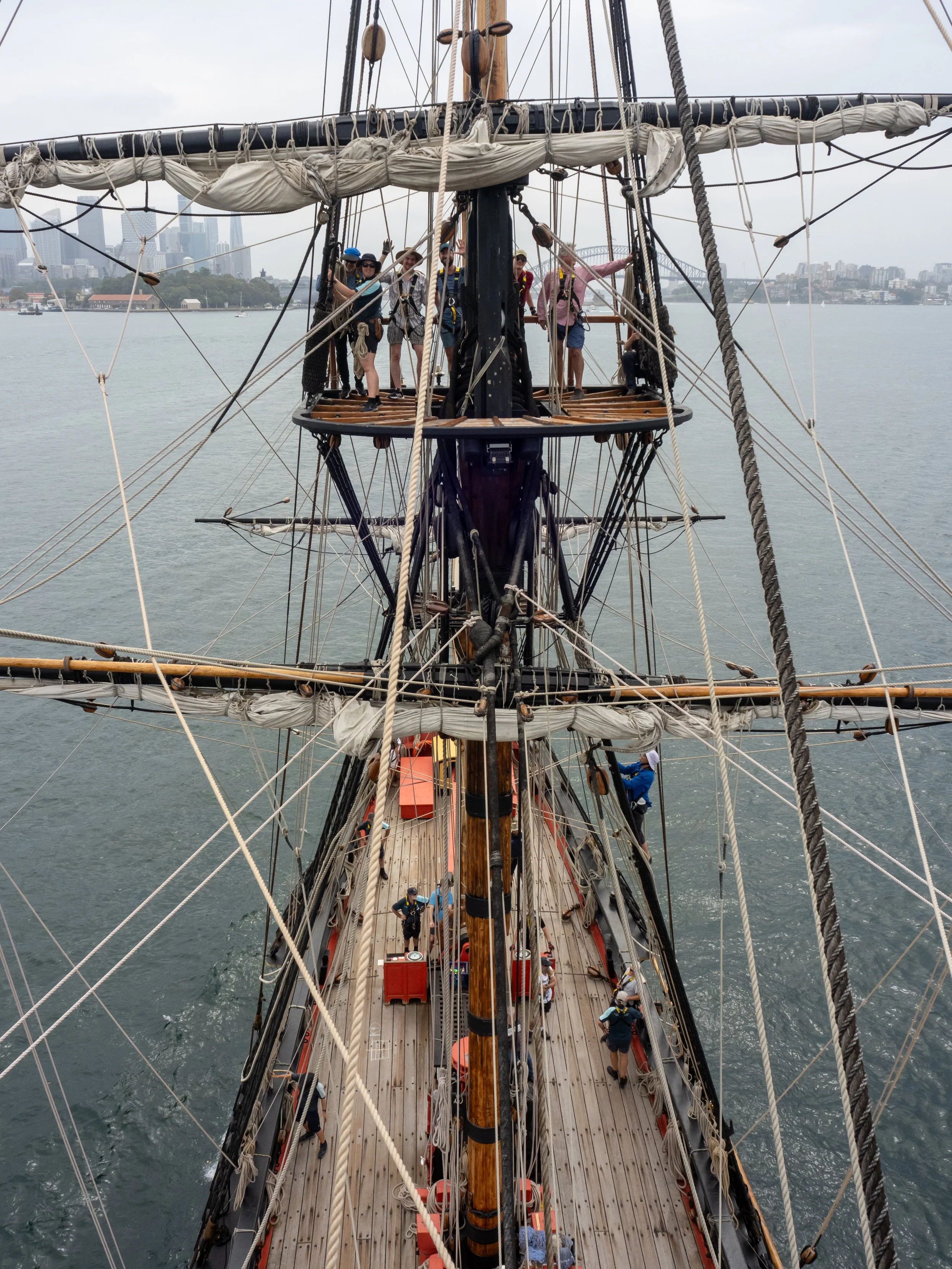Endeavour Sailing Voyage
Climbing the mast aboard HMB Endeavour
A SEA OF STARS is the best way to describe my view from Endeavour’s deck at 2 am in the dark of night. It’s one of the special moments of sailing aboard this faithful replica of James Cook’s ship of exploration, which provides the most authentic experience possible of what life was like for sailors of the 18th century.
February’s journey had no planned itinerary, but simply followed the wind. For a week, everyone aboard ate, slept, worked and lived like a sailor of Cook’s era. The voyage was not for the faint of heart – it was challenging, thrilling, rewarding and unique. As the ship’s master stated, ‘Everyone comes away changed from this’. Despite the difficult weather conditions – high swell, rough seas and consistent drizzle and rain – everyone worked together willingly.
The motion of the ship affected us all, but eventually even I got used to the dance of the constant swaying back and forth. The skipper and crew did not break a sweat and at times were immovable on a ship that was almost doing somersaults. We wore harnesses and connected ourselves to safety lines running across the ship. I lost my footing a few times and might have gone for a swim if not for the line. Another essential requirement to combat the wind, rain and darkness was thick, non-absorbent, high-visibility clothing.
The work aboard the ship was hands-on and incredibly exciting. For me, the most exhilarating but least nerve-racking activity was climbing the mast. Clambering up a rickety rope, standing on a small platform and seeing the world from on high was breathtaking. Unfurling sails while balancing on a rope line high above the deck is a terrific way to begin a journey into the endless ocean. Other jobs needed around the clock were handling ropes and ‘wearing’ (turning) the ship, which involved heaving on lines and tying many a knot.
A typical watch lasted four hours and required you to look out for ships, debris and ocean life, and also communicate, adjust the sails and helm the ship. We had four hours on and up to eight hours off, around the clock. We found ourselves up at all times of the day and night, experiencing life and nature at odd hours. My favourite watch was one from midnight to 4 am, when the clouds parted to reveal a panorama of stars. It was truly an awe-inspiring sight – the vast celestial array over an immense expanse of ocean was enough to make anyone feel small. It was sometimes difficult to keep track of the constellation by which we were navigating amid the distracting splendour of the sight.
Those who sail aboard Endeavour are either professionals or paying voyage crew and come from all walks and all stages of life. Some were descended from those who sailed on the original Endeavour and wanted an insight into their ancestors’ lives. Others used the journey as catharsis from the stresses of everyday life. The voyage had a different purpose and meaning for each person aboard. One of my favourite reasons was simple and understandable: ‘I’ve got four kids at home, so I need a break’.
Sleep on a ship is more exciting than on land – although you’re constantly swaying from side to side, you’re in sync with the ship, and if you close your eyes, you can almost believe you are stable and unmoving. There were many challenging and thrilling aspects of this voyage, making it a true adventure. I walked away from the journey changed, with a greater appreciation of sailors and tall ships and what they can achieve.

